China
China
The following Nativities are each displayed in a unique permanent setting created by Marian Library Crèche Collection volunteers. The descriptive text for each was written by Father Johann Roten, S.M.
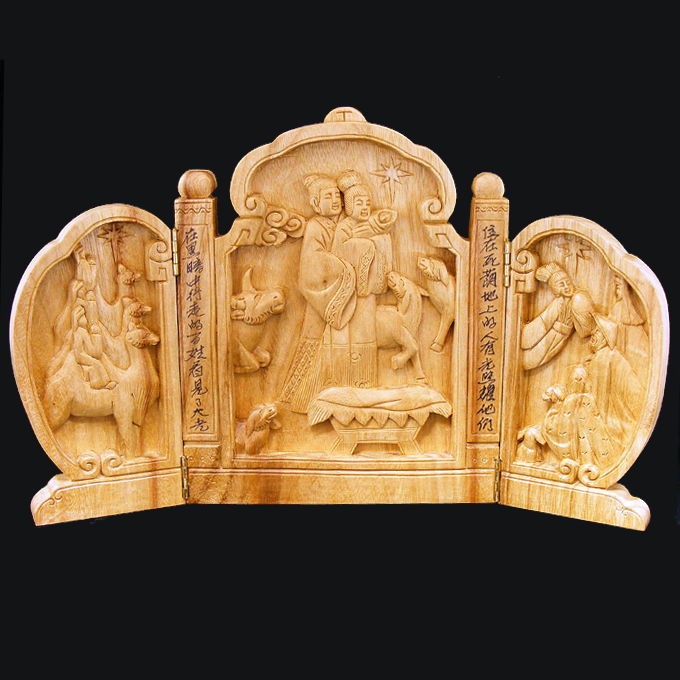 – ML.4186
– ML.4186
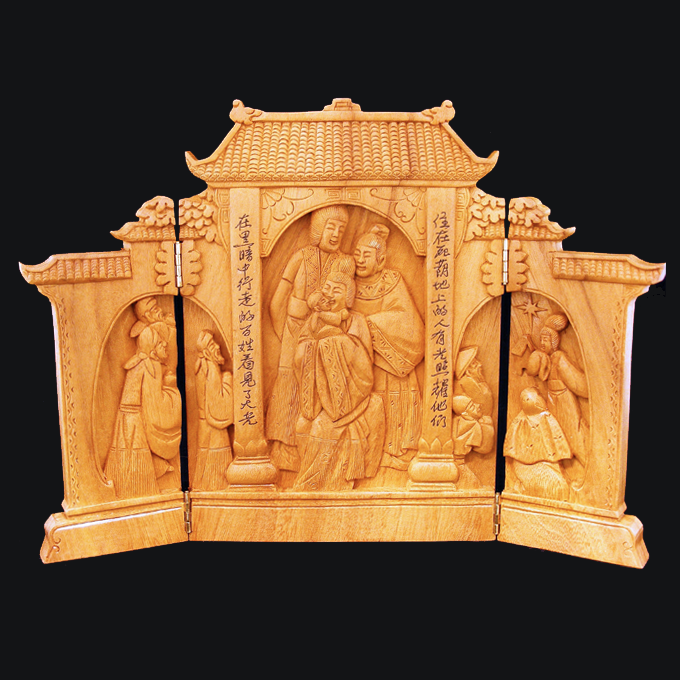 – ML.4187
– ML.4187
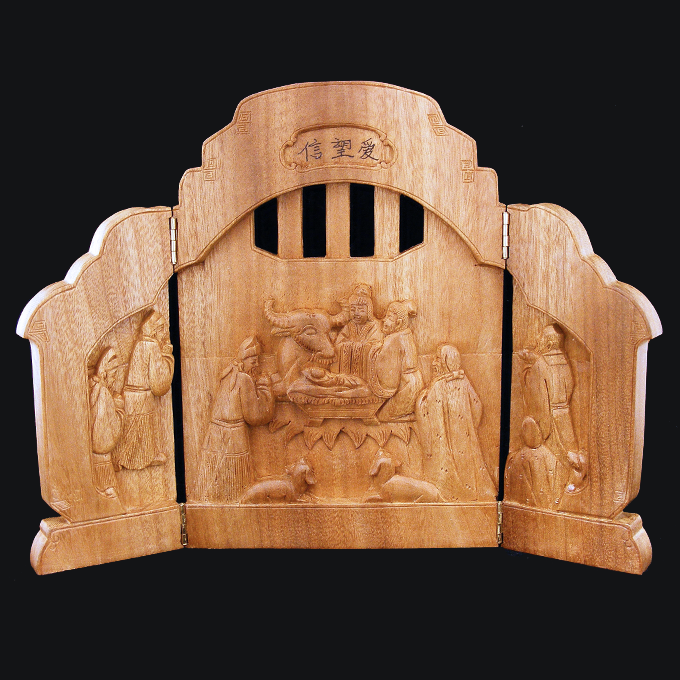 – ML.4188
– ML.4188
Chinese Triptychs
Unknown artist
Zhejiang Province
This cluster of Chinese triptychs made by a Chinese Christian from the Zhejiang Province center on the promise of Isaiah 9:2 that people sitting in the dark have seen a great light, a symbol of the future Messiah. The three Chinese characters above the triptych with a barred window mean love, hope, and faith. The central panel is always reserved for the Holy Family, sometimes in the company of a water buffalo which in Chinese culture is a symbol of protection. Notice also that on one of the central panels there is a third adult person. He represents God Father, the real father of Jesus, standing behind Mary and Joseph. The side panels give space and attention to other figures of classical nativity scenes: to star, lamb and sheep, to the shepherds, to camels and magi.
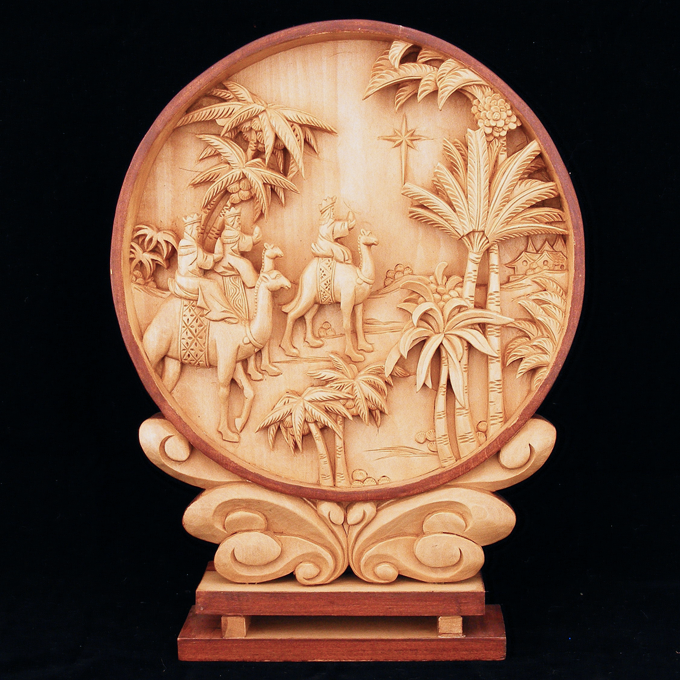
From China with Art
Unknown artist
Zhejiang Sheng area
Many nativity sets bought in the USA carry the label "Made in China." Almost all of them are of Western design but produced in China. There is a different kind of nativity representations which are a genuine product of Chinese culture. Chinese art with its roots in calligraphy and the mastery of the brush excels in rendering the intricate beauty of details and the narrative power of broad strokes. There exists in Chinese art a fortuitous assimilation of Christian art as exemplified in this nativity representation. The tondo featuring the journey of the magi is a masterpiece of detailed intricacies. Held and supported by the butterfly, a symbol of life eternal, its medallion shaped Nativity scene is both mirror and shield of divine protection suggested by the circular form of the artwork.
[Elisabeth van Mullekom Collection]
– MLA.414
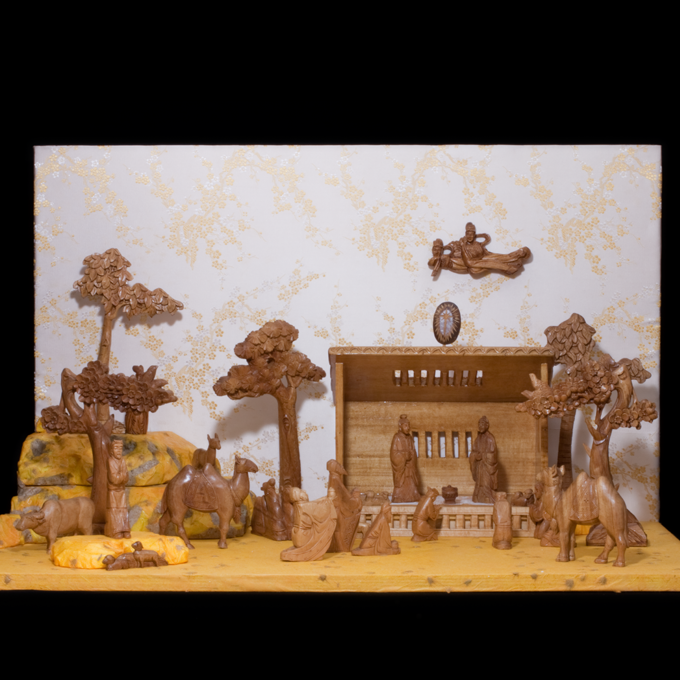
Tree of Life
Unknown artist
Zhejiang Sheng area
An area famous for all types of woodcarving, the Zhejiang province, is home of the only Christian woodcarvers' workshop in China. This Nativity scene was designed by a Chinese Christian man who wants to remain anonymous. A generous nativity set, it has an impressive number of figures and trees. In Chinese nativities, human figures tend to be of modest size but are beautifully carved. All figures related to nature, like animals and trees, are given more sizeable proportions. Indeed, nature is dominant, the mother and teacher of the human race. As in many other cultures trees were the object of veneration in ancient China. It was in the shadow of the tree pipal (ficus religiosa) that Gautama Buddha received his divine illumination. The tree became a symbol of the "great awakening."Manger and cross in Christian tradition and legend have been assimilated with Incarnation and Redemption, but it is Jesus Christ himself who is the tree of life.
[Elisabeth van Mullekom Collection]
– MLA.417
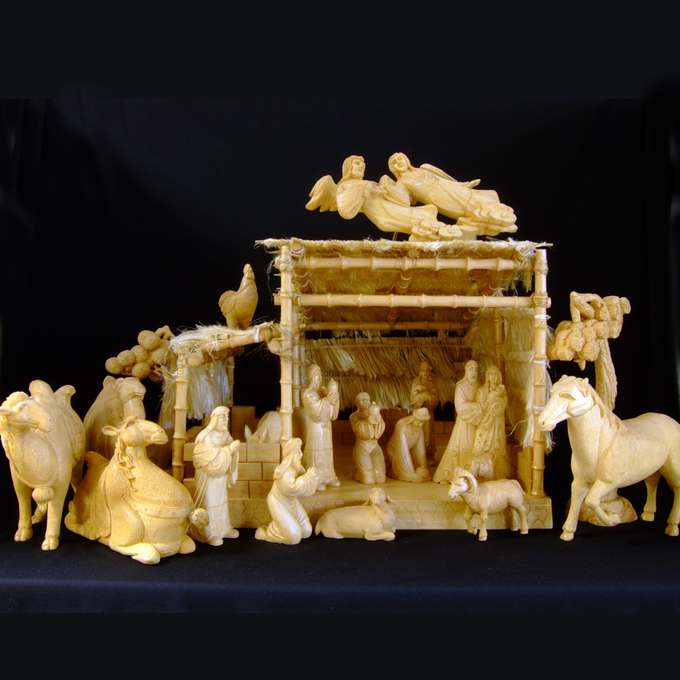
Away from Home
Christian Carving Studio
Zhe jiang
The spacious home in this set is almost empty. People who live here left behind an empty manger and some stray animals. The action in this scene is away from home and in the open space where people meet people, animals, and trees. Though almost diminutive the holy couple holding the baby is still the center of the event...at least until the eye discovers the superbly carved horse and the imposing camels. Only then does the onlooker rediscover and realize the importance of nature in Asian culture. Nature is not only akin to a life-giving mother. Natrure also holds sway over human behavior and morals. In this set the horse and camels stand for strength and perseverance, two virtues of universal importance and application. The rooster hails the coming of Christ. He is also a symbol of fecundity. So there is no "away from home" for nature is omnipresent. In Christmas lore nature bows only before the newborn king.
[Elisabeth van Mullekom Collection]
– MLA.49
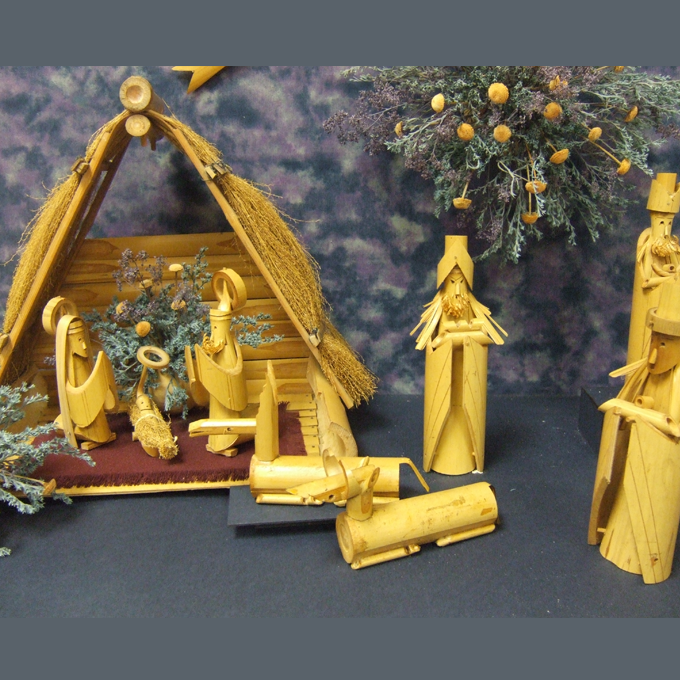
Bamboo Nativity
Potzu Studios
Culture has been defined in many ways. One of themsecribes culture as a higher form of civilization. Civilization deals with the necessities of life, such as providing food and shelter. It meets so-called primary human needs. Culture builds on civilization. It takes the simple tools of daily life and embellishes them, using precious materials and artistic design. Some will object: A spade is a spade; it doesn't need to be a work of art to be useful. However, we like what is beautiful and precious for we have secondary as well as primary needs. In sum, culture is ultimately a labor of love. It speaks of gratuitousness and generosity, and tips the scame of human endeavor in favor of spiritual values.
This Taiwanese nativity is a fine illustration of culture building on civilization. It is made of bamboo, the woody grass of Bambusa, which is widely distributed chiefly in the tropics and subtropics. Young bamboo shoots are utilized for good. The stalks are used to manufacture cooking utensils, furniture, and structure framing. The hollow stems of this large woody plant are hard and durable. They lend themselves to carving and sculpting. This attractive little crèches was produced by the renowned Potzu studios. It is set against a bluish backdrop to highlight tone and structure of the bamboo. The figures with their flowing robes and hands folded in praise and thanksgiving intimate a spiritual climate of awe and joyous reverence. According to some interpreters, the gifts of the wise men – a ring, a flute, and a piece of fruit – symbolize the marriage (ring) between heaven (flute) and earth (piece of fruit) which came about in the incarnation of Jesus Christ.
– ML.2620
